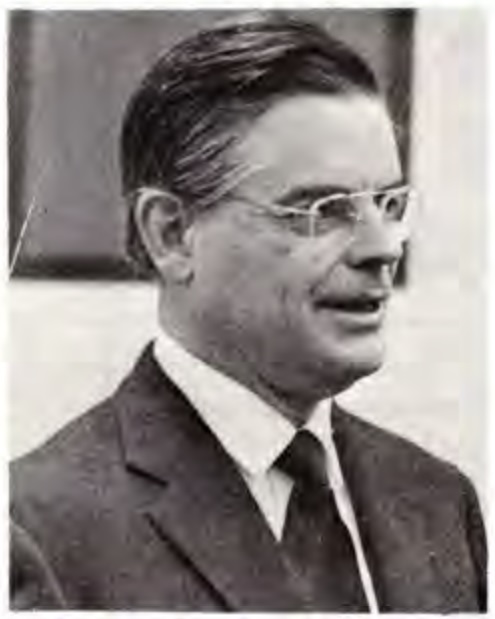R. R. Wilson Receives Medal of Science

Robert R. Wilson
Robert R. Wilson, Director of the National Accelerator Laboratory, was awarded the National Medal of Science, the federal government's highest award for distinguished achievement in science, mathematics and engineering, at a ceremony at the White House on Wednesday, October 10. The announcement of the award by the President on October 3 cited Dr. Wilson for his "unusual ingenuity in designing experiments to explore the fundamental particles of matter and in designing and constructing the machines to produce the particles, culminating in the world's most powerful particle accelerator."
The National Medal of Science was established in 1959 by the 86th Congress. It is presented to the individuals who, in the judgment of the President, "are deserving of such recognition by reason of their outstanding contributions to knowledge in the physical, biological, mathematical or engineering sciences." The President is assisted in the selection of recipients by the President's Committee on the National Medal of Science, a committee of distinguished scientists currently chaired by Dr. Charles P. Slichter, Professor of physics, University of Illinois, Urbana. There are eleven recipients of the Medal in 1973.
Robert Rathbun Wilson was born in Frontier, Wyoming. He studied at the University of California at Berkeley under Ernest O. Lawrence, receiving a doctor's degree in 1940. While still a graduate student, Mr. Wilson began his research on the scattering of protons by protons. He went to Princeton University as an instructor in 1940 and was soon engaged, in collaboration with Enrico Fermi, in some of the early measurements of the neutron-absorbing properties of Uranium-235. In 1941, he invented the "Isotron method" for separating the isotopes of uranium. He was then placed in charge of a 50-man energy project at Princeton.
When the Los Alamos Laboratory was formed in 1943, Mr. Wilson and his colleagues moved to New Mexico to help in the formation of that laboratory where he served as director of the cyclotron group. He was named to head the Experimental Nuclear Physics Division a year later and served until 1946 when he accepted a teaching post at Harvard University. He helped design a cyclotron at Harvard before leaving in 1947 to direct the Cornell University Laboratory of Nuclear Studies. There, he and his colleagues built a progression of electron synchrotrons that started with a pioneering 300 million electron volt (MeV) machine. They were the first to apply the strong focusing principle to an accelerator when they built a 1.2 BeV machine which was then converted to a more modern 2 BeV unit. The present 10 BeV electron synchrotron laboratory at Cornell, the location of the largest electron synchrotron in the world, is named the Wilson Synchrotron Laboratory in Dr. Wilson's honor.
In March, 1967, Dr. Wilson accepted an appointment as Director of the National Accelerator Laboratory. He assembled a staff at Oakbrook from all corners of the U.S. and the world. His touch for classic simplicity, combined with originality, is visible everywhere at NAL, where he has been directly involved in every phase of the construction of the Laboratory, all the way from his concept for the accelerator magnets to the massive prefabricated concrete slabs of the circular auditorium building.
Commenting on the award, Dr. Wilson remarked, "I will be proud to receive the National Medal of Science as a recognition of the work of my colleagues whose skill and effort have breathed life into the accelerator and the experiments now being undertaken at the Laboratory. They are now exploring the innermost parts of the proton and the exotic forces that come into play in that region. I hope this recognition of their work will spur them to make the discoveries necessary to reveal a beautiful and simple form that underlies reality."
Dr. Wilson has also been a strong force behind the equal employment opportunity program in effect at NAL since its inception. Together with Edwin L. Goldwasser, Deputy Director of the Laboratory, he formulated a statement of the Laboratory's EEO position early in 1968. He continues to be a prime mover of the EEO programs at NAL. Dr. Wilson was elected a member of the National Academy of Sciences in 1957 and was the first chairman of the Federation of American Scientists. Recently, he has been featured as one of the "Men of Science" in the 1974 Science Year Book, the World Book Science Annual.
Dr. Wilson had formal training as a sculptor in the U.S. and in Italy and has had two showings of his sculpture in Ithaca, N.Y. He was commissioned to make a large sculpture for the Institute of Advanced Studies at Princeton, N.J., and another for the Festival Theatre in Ithaca.


